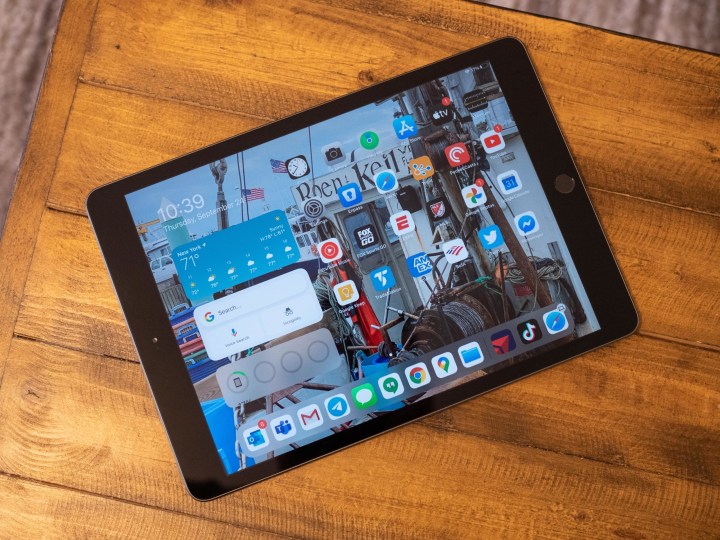Not everyone wants to shell out a bunch of cash for a high-end tablet, and it makes sense. While I have turned my iPad into my laptop replacement, some prefer simply to use their tablet to watch the occasional series on Netflix, browse the web, and read the news. If that’s you, you might be tempted to open up Amazon dot com, and find the cheapest tablet you can get your hands on.
You should avoid doing that.
I get it. Why not spend as little as possible for a product that you won’t use all that much? But in the not-so-long term, you’ll likely end up spending a whole lot more when you have to prematurely buy another tablet. Not to mention the fact that if you do a little research, you should be able to find something that’s a way better — and still not overpay.
The worst offenders
If you fire up Amazon and type in the word “smartwatch,” you’ll see dozens of off-brand devices that look like expensive alternatives, but cost less than $50. They’re almost all terrible products, but they’re also way cheaper than the next step up, whether it be from Fitbit, Apple, or anyone else.
The reason there are so many cheap smartwatches is because Amazon itself has yet to corner the market with its own cheap smartwatch.

Tablets have a similar problem, but there’s nuance to the decision-making process. The reason there are so many cheap smartwatches is because Amazon itself has yet to corner the market with its own cheap smartwatch. Type the word “tablet” into Amazon, and you’ll get a whole host of Amazon-branded “Fire” tablets that the company is able to sell for cheap because it makes its money back by selling services that can be consumed on the tablet.
But just a little further down those cheap, off-brand tablets are still there, and at first glance, they seem to present themselves as much more premium than their sometimes-even-cheaper Amazon counterparts. Take the Zonko 10-inch Android Tablet, which is clearly positioned as being a sleek, budget alternative to the Amazon Fire tablet. Only problem? It’s underpowered, has a dated version of Android that certainly won’t be updated, a sub-par camera, and more glaring issues. Or, the Vankyo MatrixPad, which also has a 10-inch display, 32GB of storage, and a slate black color-scheme. Oh yeah, it only has 2GB of RAM, also ships with Android 9, and we’re way beyond quad-core mobile processors being high-end.
Cheaper is … better?

You might assume that I’m about to tell you to spend more for a better product. After all, you get what you pay for, right? Well, yes. Samsung makes a great high-end Android tablet that’ll please just about anyone. But what if you’re paying for something in ways other than dollars up front?
It’s hard to argue with the value Amazon’s Fire tablets provide.
While the tablets noted above cost between $100 and $150, you can actually get something that’s likely to serve your needs much better for less, or at most, the same price. Amazon’s Fire tablets aren’t incredible, but they’re solid for the price. The only downside is that you’ll have to deal with some advertising, and Amazon trying to get you to sign up for services like Prime, Prime Video, and Prime Music. In my experience, the ads are prominent but not debilitating, and frankly, the better software support, better display, and improved performance are worth the trade-off. Even Amazon’s own app store is a fine substitute to Google Play for the basic appliance-like needs these cheap tablets are meant to address.
That’s not to say that you can’t get a much better product if you do have the money to spend. It’s just that if you really want to save money, don’t be lured into buying something from an off-brand company just because it presents itself as being a great value — go for an Amazon Fire tablet instead.
Our picks for the best Android tablets
If you have a bit more cash
If you want to save money, start by looking at an Amazon tablet. If you look at those tablets, and decide you can spend a little more and want something a bit higher-end, we have some recommendations, in order from least to most expensive.
If you want to save money, start by looking at an Amazon tablet.
A step up from an Amazon tablet would be a last-generation or lower-end Samsung tablet. Don’t get me wrong, Samsung makes excellent tablets — but they also make tablets that seem to regularly get heavily discounted. For example, you can get the 2019 Samsung Galaxy Tab A, with its 8-inch display and at least serviceable camera, for a little over $130. Or, you can get the newer Samsung Galaxy Tab A7, with its 10.4-inch display and solid processing power, for $230.

Then we enter iPad territory, and if you can stretch to $320, that’s what you should buy. The entry-level iPad may not look as modern as the iPad Air or the iPad Pro, but it has an almost current-generation Apple processor, a beautiful display, and tight integration with Apple’s ecosystem. Frankly, I almost always recommend an iPad to anyone who wants a tablet and isn’t married to Android.
You don’t have to spend a lot of money to get a solid tablet. But you shouldn’t assume that just because you don’t have a lot of money to spend, you have to buy a cut-rate product from a random company online. Steer clear from nameless Amazon sellers, and buy something with the weight and support of an actual brand behind it. In the end, when you can get an Amazon Fire 7 for $50, there’s little reason to deal with compromises elsewhere for more money.



